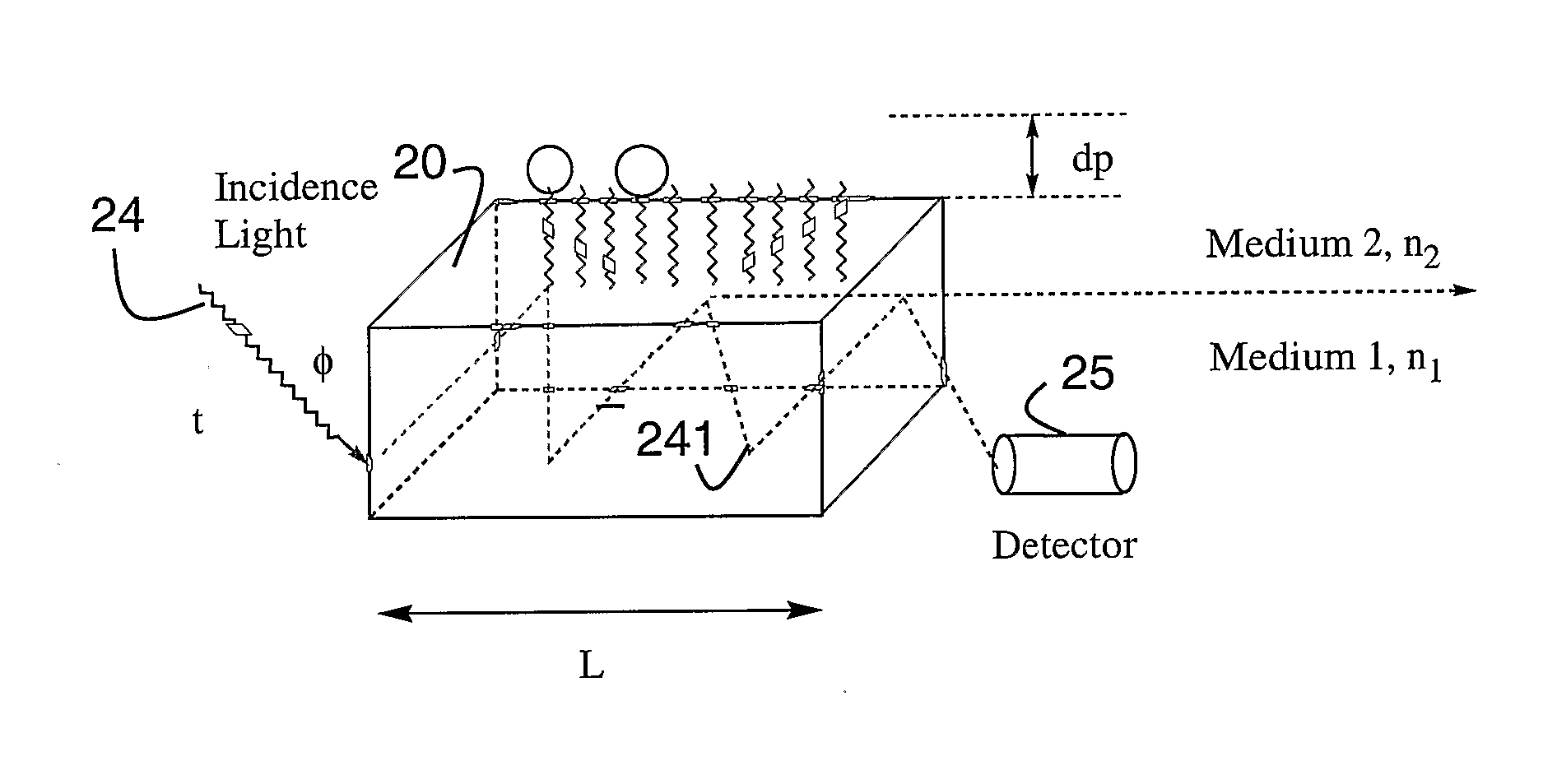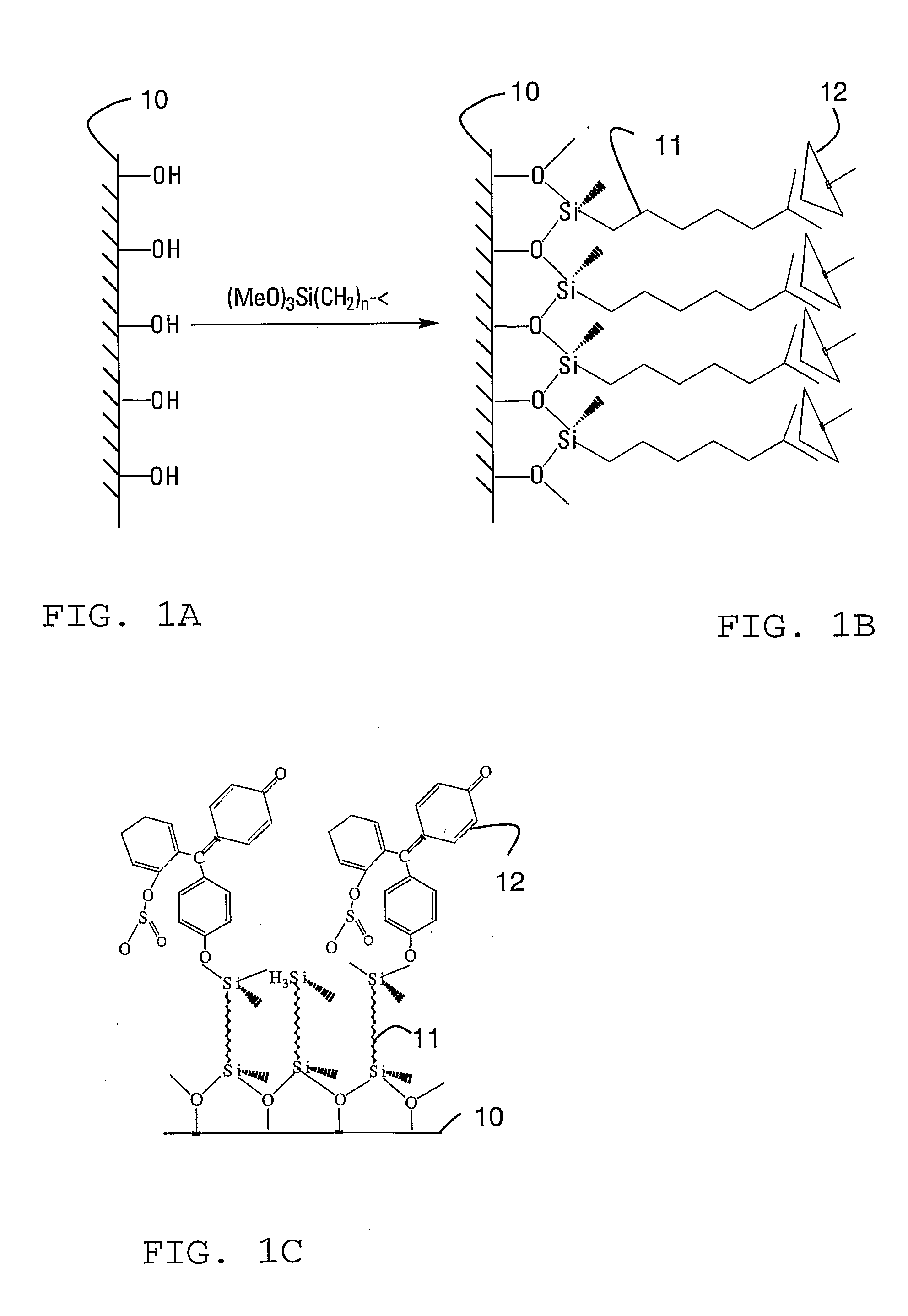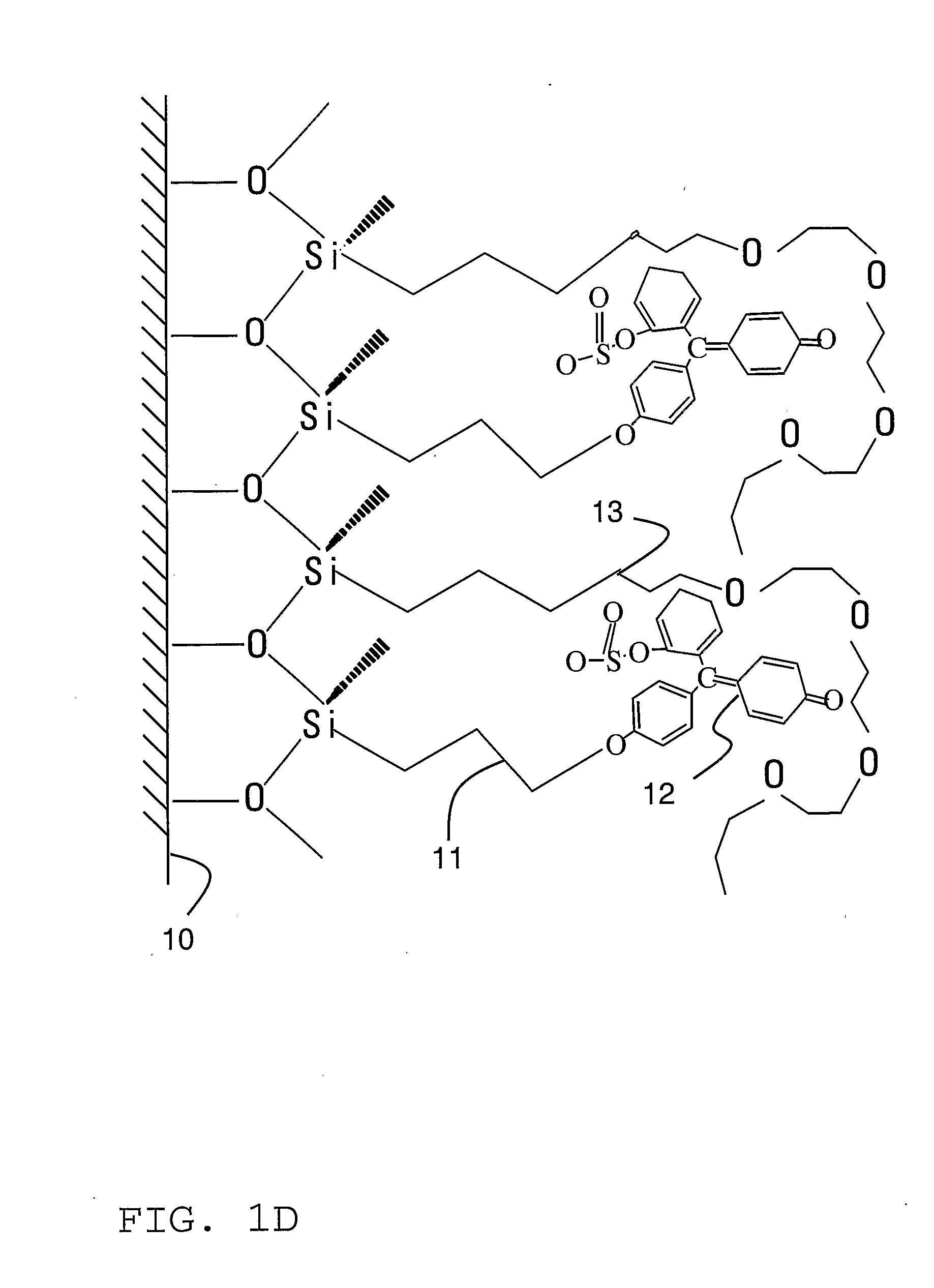Optical Ph Sensor
a ph sensor and optical technology, applied in the field of optical ph sensors, can solve the problems of inability to directly apply the above-mentioned techniques to elevated temperature, high pressure, complex chemical compositions, etc., and achieve the effect of being easily integrated into the drill string
- Summary
- Abstract
- Description
- Claims
- Application Information
AI Technical Summary
Benefits of technology
Problems solved by technology
Method used
Image
Examples
Embodiment Construction
[0032]The concentration of protons in an aqueous medium arises from the chemical equilibrium of water molecules presented in equation 1 and the definition of pH is given in equation 2:
H2O -<>-H++OH− [1]
pH=−log [H+] [2]
[0033]The alteration of the colors of dyes by the interactions with acids and / or alkalines is one of the oldest observations in chemistry. The color change results from a rearrangement of the indicator molecules when hydrogen ions are (partially) released or taken up. Typical indicator molecules or chromophores have two tautomeric forms, each having a different absorption spectrum. As the pH of the solution varies, the relative size of each tautomer's optical absorption peak changes in proportion to the changing relative concentration of the two individual forms.
[0034]The present invention employs a unique approach for interface modification, that is, using a bi-functional organosilane reagent. In the example an alkyl chain is used terminated at each end with a...
PUM
| Property | Measurement | Unit |
|---|---|---|
| pressure | aaaaa | aaaaa |
| pH | aaaaa | aaaaa |
| wettability | aaaaa | aaaaa |
Abstract
Description
Claims
Application Information
 Login to View More
Login to View More - R&D
- Intellectual Property
- Life Sciences
- Materials
- Tech Scout
- Unparalleled Data Quality
- Higher Quality Content
- 60% Fewer Hallucinations
Browse by: Latest US Patents, China's latest patents, Technical Efficacy Thesaurus, Application Domain, Technology Topic, Popular Technical Reports.
© 2025 PatSnap. All rights reserved.Legal|Privacy policy|Modern Slavery Act Transparency Statement|Sitemap|About US| Contact US: help@patsnap.com



